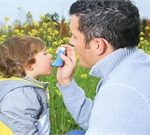
If you travel a lot for business or pleasure, you may think that the most exercise possible is lugging your bags in and out of a car or through an airport. But it’s important to get in real exercise even when you’re away from home. If you’re a business road-tripper, look for snippets of time to move those muscles, like when you stop for gas. Any bodyweight calisthenics will do. Think: squats. There are many varieties, but the basic is a powerhouse move. Stand with feet a little more than shoulder-width apart, arms out in front of you. Bend the knees and push your hips back, lowering your body until your thighs are below your knees if possible. And then return to standing position. Do three sets of 10. At your hotel, do planks or push-ups and some crunches. If stuck in a car or on a plane for any length of time, try isometric exercises, where you can contract your muscles without needing to move around a lot. Put the palms of your hands together and press as hard as you can. That will engage your chest muscles. Contracting your gluteal muscles can help your lower back. Remember to hold each isometric exercise for 10 seconds. Do a few sets of 10 reps each. Once you get to your destination, if you don’t have… read on >















